- Blog
- How to Boost Sales on Shopify in 2025: 13 Proven Strategies
How to Boost Sales on Shopify in 2025: 13 Proven Strategies
-
Barbara Bartucz
- Ecommerce
- 6 min read
Table of Contents
Running a Shopify store is awesome, right? You’re your own boss, building a brand, traveling the world, and raking in the sales.
At least, that’s how it looks on Instagram.
Now let’s face the reality.
Sometimes those crickets can get a little too loud. Maybe your launch wasn’t quite the splash you were hoping for, or maybe sales have slowed down. Whatever the reason, you’re ready to turn things around.
If you face this situation, check out these 13 proven tips to increase sales on Shopify. But first, let’s discuss why you might not have enough sales.
Why do you get traffic but not sales on Shopify?
Does your online store have a decent amount of traffic, but those visitors don’t seem to convert? It can be frustrating, especially when you don’t know why it’s happening.
In this section, we’ll explore some potential reasons why your conversion rate might be lagging.
1. Traffic source mismatch
Just because you’re getting traffic to your Shopify store doesn’t mean it’s the target audience you need.
Targeting the wrong demographics or interests can lead to window shoppers who have no real buying intent. This won’t help with increasing sales.
Make sure your marketing efforts are aimed at audiences who are genuinely interested in your products. Use analytics tools to understand where your traffic is coming from and adjust your marketing strategy and your marketing messages accordingly.
2. Unclear value proposition
Do visitors instantly understand what your brand is and what problem you solve?
A confusing or cluttered website can leave visitors unsure about the value you offer. This can hurt your chances of converting them into loyal customers.
Ensure that your homepage and product pages clearly communicate your unique selling points. Use concise, compelling copy and high-quality product images to convey your message effectively.
3. Poor user experience (UX)
Is your Shopify store easy to navigate and use?
A slow-loading website, confusing navigation, or a complicated checkout page can frustrate visitors and cause them to abandon their carts. This can negatively impact your sales.
Optimize your site for speed, simplify the navigation menu, and streamline the checkout process. Conduct user testing to identify and fix any pain points in the user journey.
4. Lack of trust and social proof
Do visitors feel confident buying from your Shopify store? An unfamiliar brand with no established reputation can make potential customers hesitant, hindering efforts to build customer loyalty.
Incorporate elements that build trust with new customers, such as customer reviews, testimonials, and trust badges. Highlight any media mentions, partnerships, or certifications that can lend credibility to your brand.
13 proven strategies to increase sales on Shopify
Now that we’ve explored some of the reasons why you might lose sales on Shopify, let’s explore 13 proven strategies you can implement straight away.
1. Use a list-building popup
Email popups (and by extension, email marketing in general) are one of the most well-known tactics for increasing sales on Shopify.
By offering an incentive in exchange for visitors’ email addresses, you not only nudge visitors to make a purchase now but also create opportunities to engage with them in the future.
Incentives can provide the necessary push to convert hesitant visitors into buyers. Some effective types of incentives are discount codes, free shipping, or other types of exclusive offers.
With the right discount offer, the average conversion rate of email popups is 7.65%. But you can improve the effectiveness of your email popups further by using a multi-step popup and incorporating trust-building elements like reviews and badges.
Take a look at this popup example with a tempting discount offer for new customers.
On the first page, they don’t ask for the visitor’s email address—they just ask for a small action, the click of a button. To increase conversions, they added a bit of FOMO (“Save it before it’s gone”) and a trust-building element with 5-star reviews.
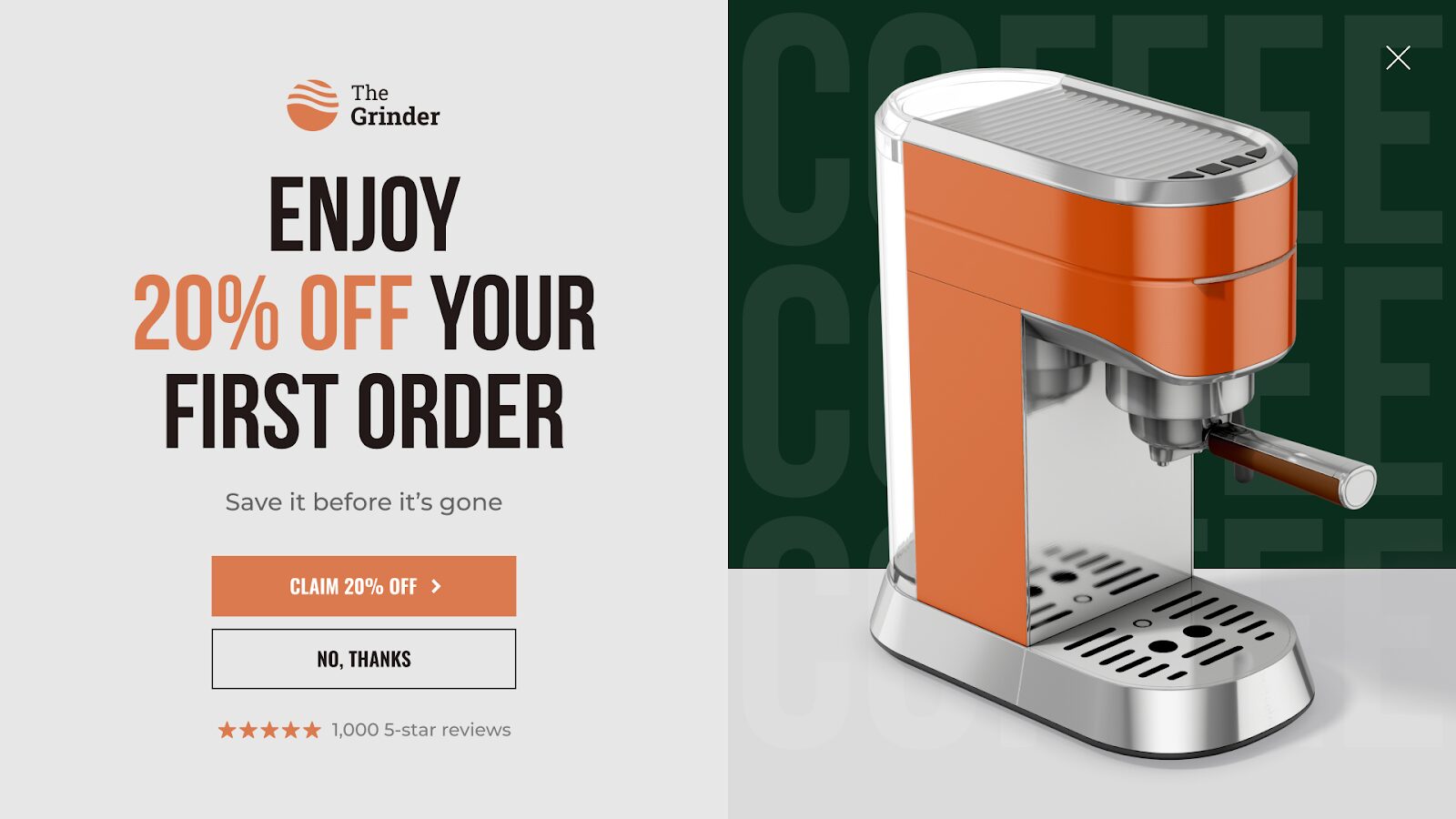
On the second page, the customer can opt-in with their email address. At this point, people are more likely to subscribe!
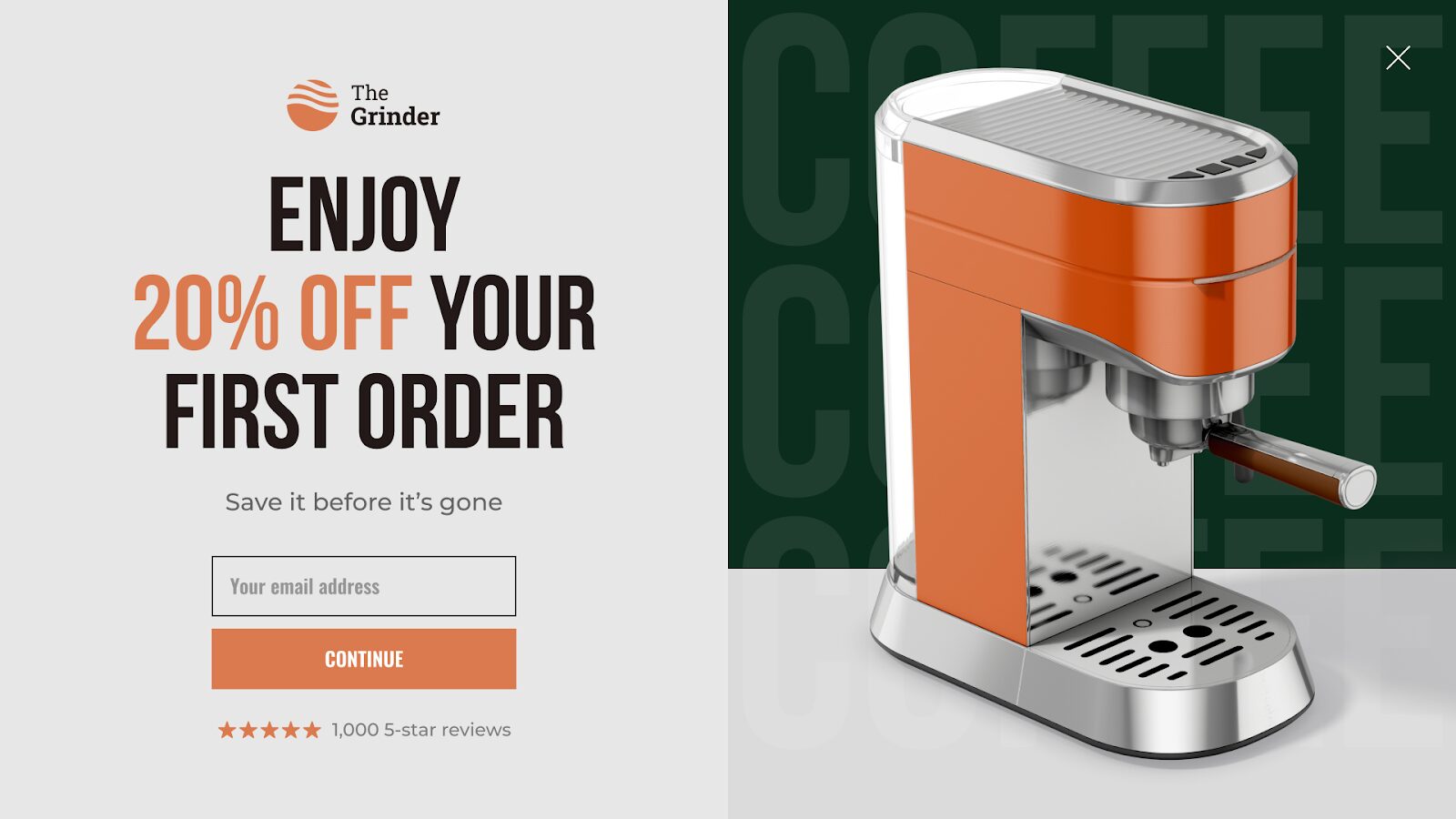
Want to craft the perfect email popup for your Shopify store? Try these templates to get started:
2. Create a quiz
Don’t let your potential customers get lost on your website with all the product choices they have. Instead help them with an interactive quiz, so they easily find the perfect products for their needs.
Take a look at how Loop Earplugs guide their customers on their homepage with a secondary CTA:
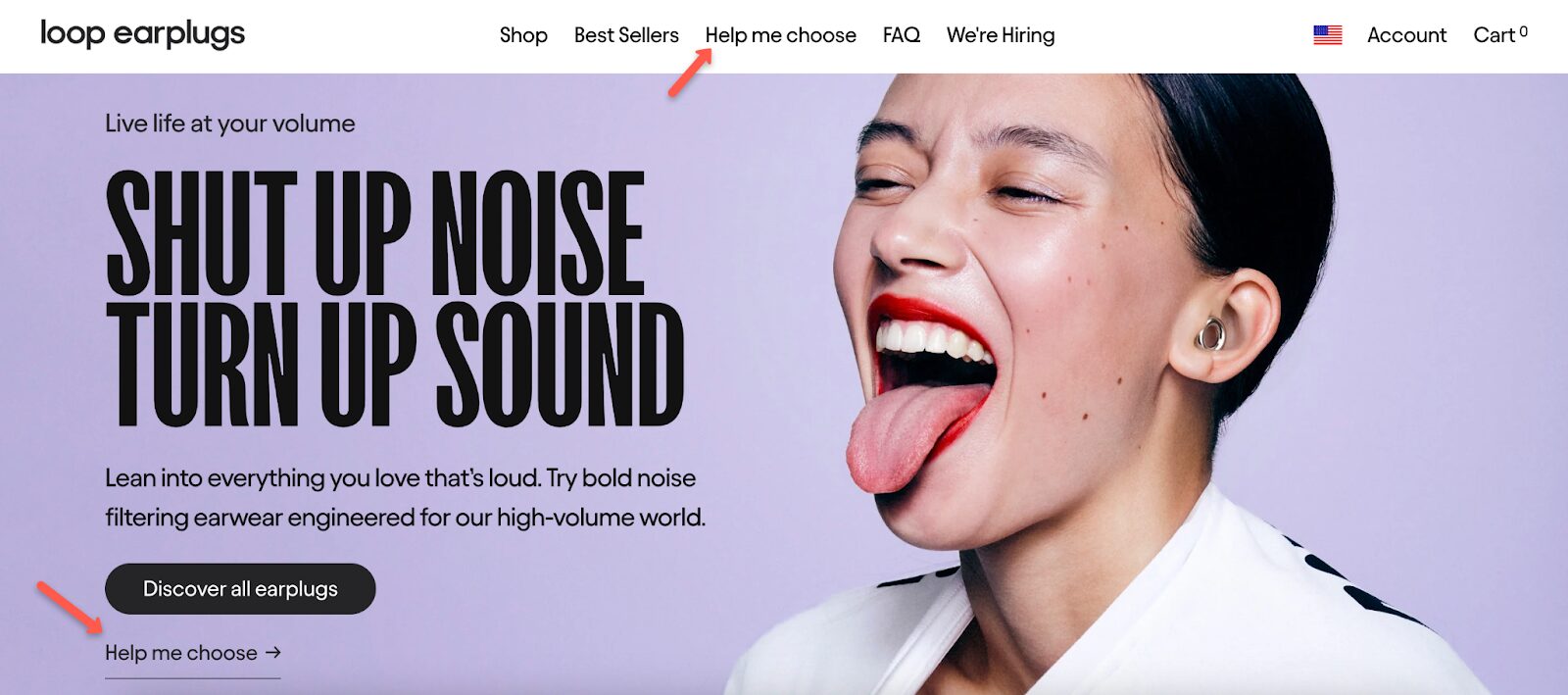
With the help of quizzes, you can uncover your customers’ pain points and based on their responses, you can recommend personalized products.
This will increase the likelihood that they’ll convert and increase your Shopify sales.
If you’d like to create a quiz, you can use one of the following popup templates:
3. Offer free shipping
Did you know that 25% of online shoppers would give up coffee or Netflix if they could have free shipping on all their online orders?
That stat alone shows that free shipping is a pretty strong incentive.
Let’s take a look at another example from Loop’s ecommerce store, where they offer free shipping for customers if they spend more than $44. And they use a sticky bar to promote this free shipping offer throughout the website.
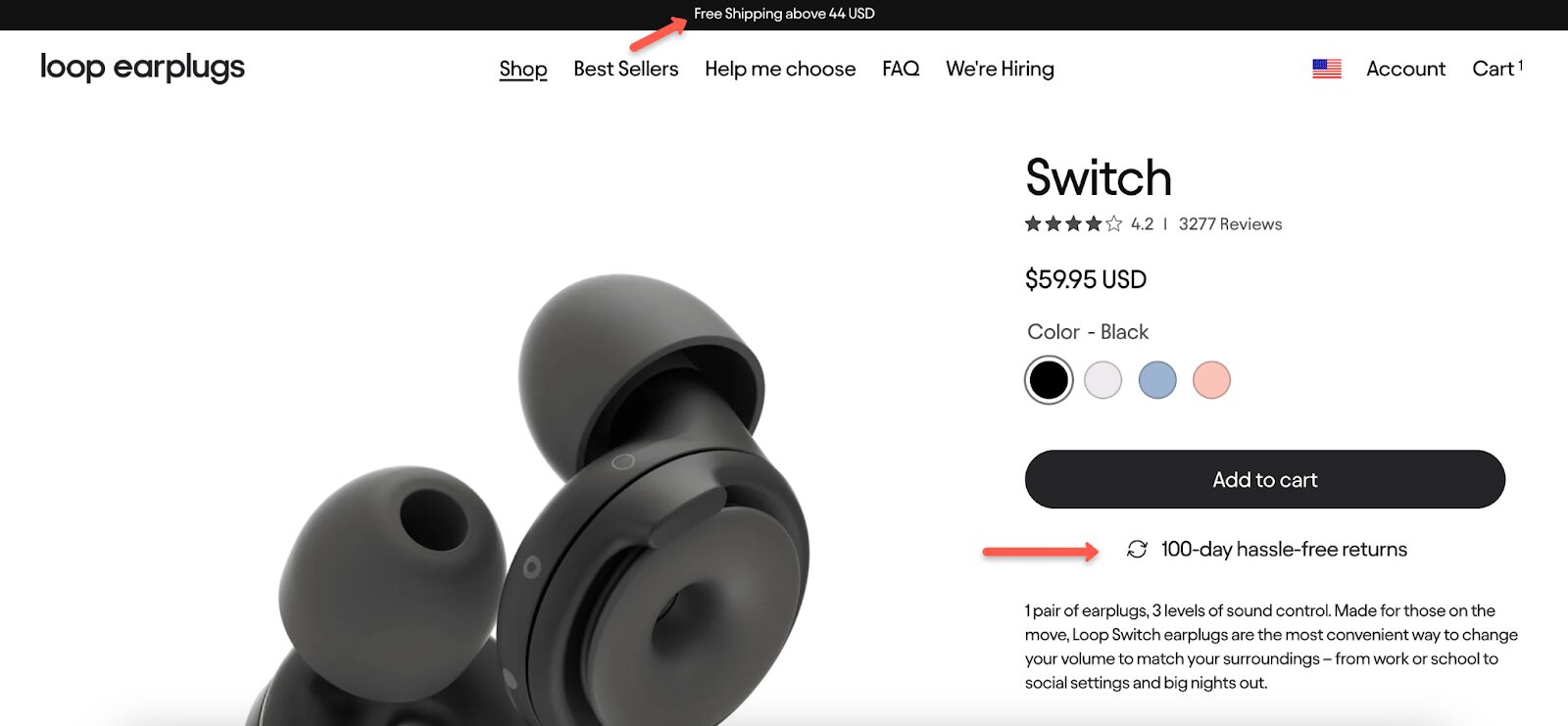
Free shipping can not only attract customers but also help you to increase average order value.
And it works especially well if you turn it into a dynamic shipping bar. This way, you display exactly how much extra your visitors need to spend to get free shipping, and the bar dynamically updates every time your customers add something to their cart.
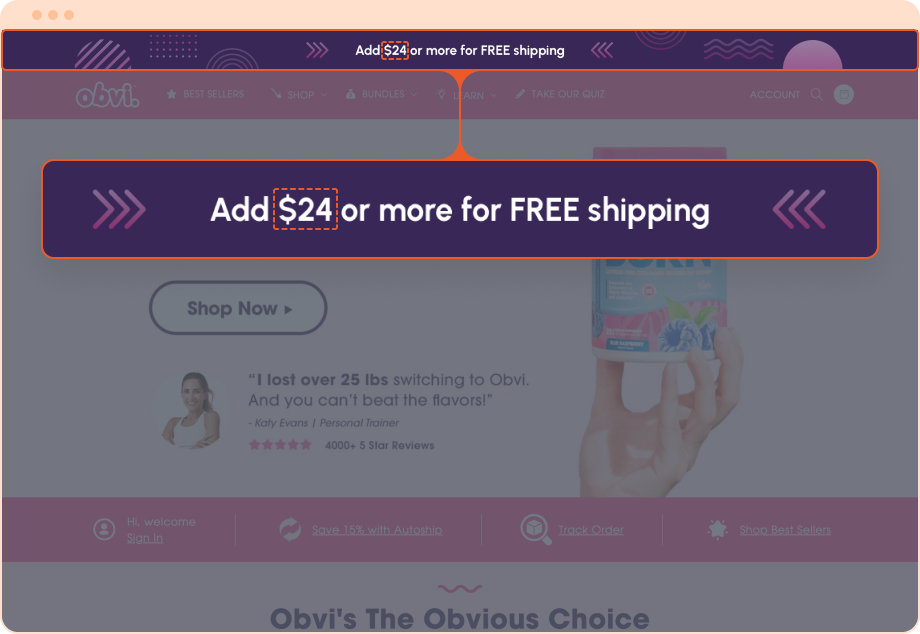
If you want to offer free shipping to create a better online shopping experience, try these templates:
4. Remind users about their coupons
If you often find that customers are not using their discount codes, you know how annoying it can be. But it’s surprisingly common.
And luckily, there’s an easy solution. Just implement a follow-up sticky bar to remind those users about their available coupons. This gentle nudge can encourage those potential customers to make a purchase while maximizing their savings.
This will increase your coupon redemption rate and your Shopify sales.
Let’s see how Crown & Paw implemented a follow-up sticky bar on their own website.
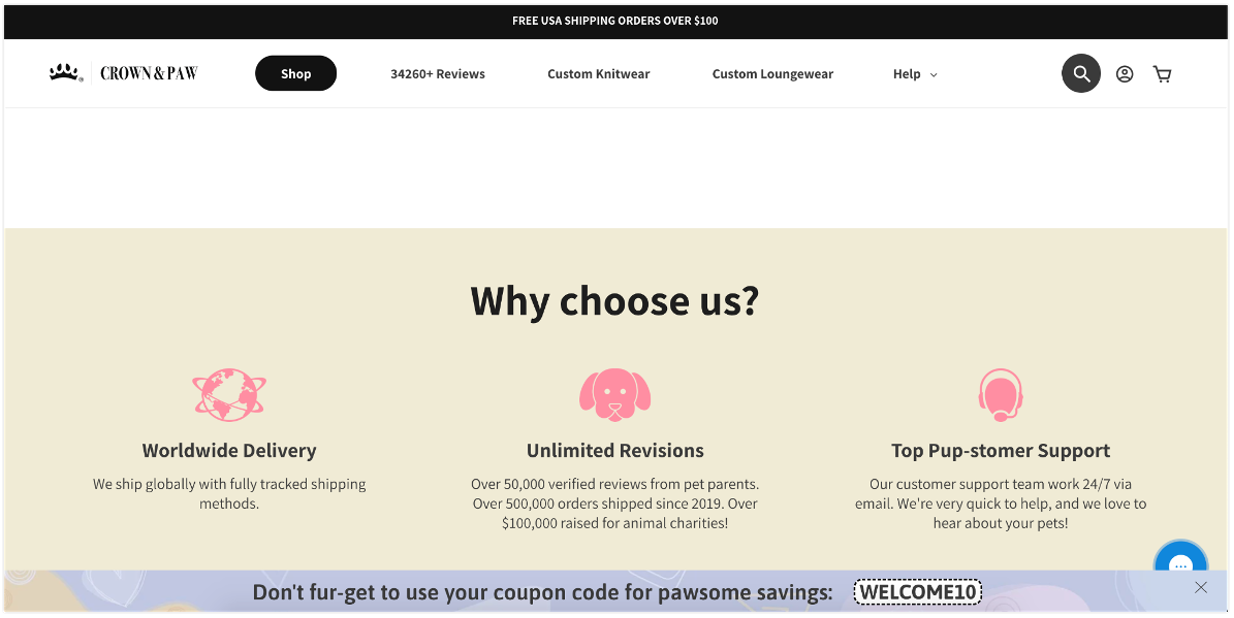
Make sure your marketing efforts are on point and get started with these reminder sticky bar templates now:
5. Focus on search engine optimization
Search engine optimization (SEO) is known to be one of the most effective marketing strategies.
If you want to please the search engines (and your customers), start with keyword research to ensure you’re targeting the right keywords.
From there, you should aim to secure top positions in the search engine results for relevant queries with well-optimized articles.
A great example of search engine optimization is Waterdrop, who covered all the relevant keywords in their niche.
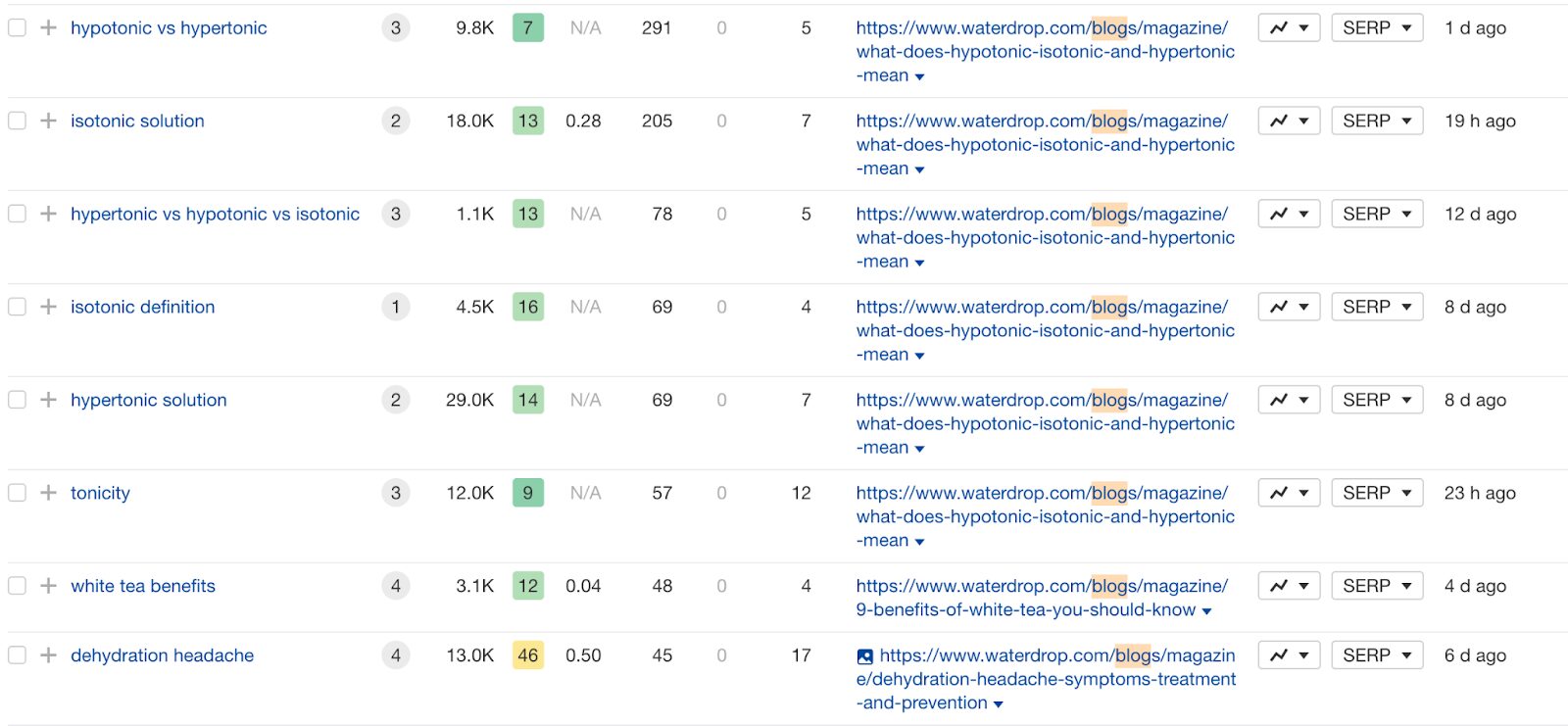
By following suit, you can enhance visibility and drive organic traffic to your Shopify store.
6. Recommend relevant products in blog posts
Now that you have some great articles that are optimized for the right keywords and you’re bringing in lots of organic traffic, there’s only one thing left to do: turn those visitors into customers.
How can you do it?
By implementing relevant product recommendations within your blog articles. This will guide visitors towards products they may be interested in purchasing.
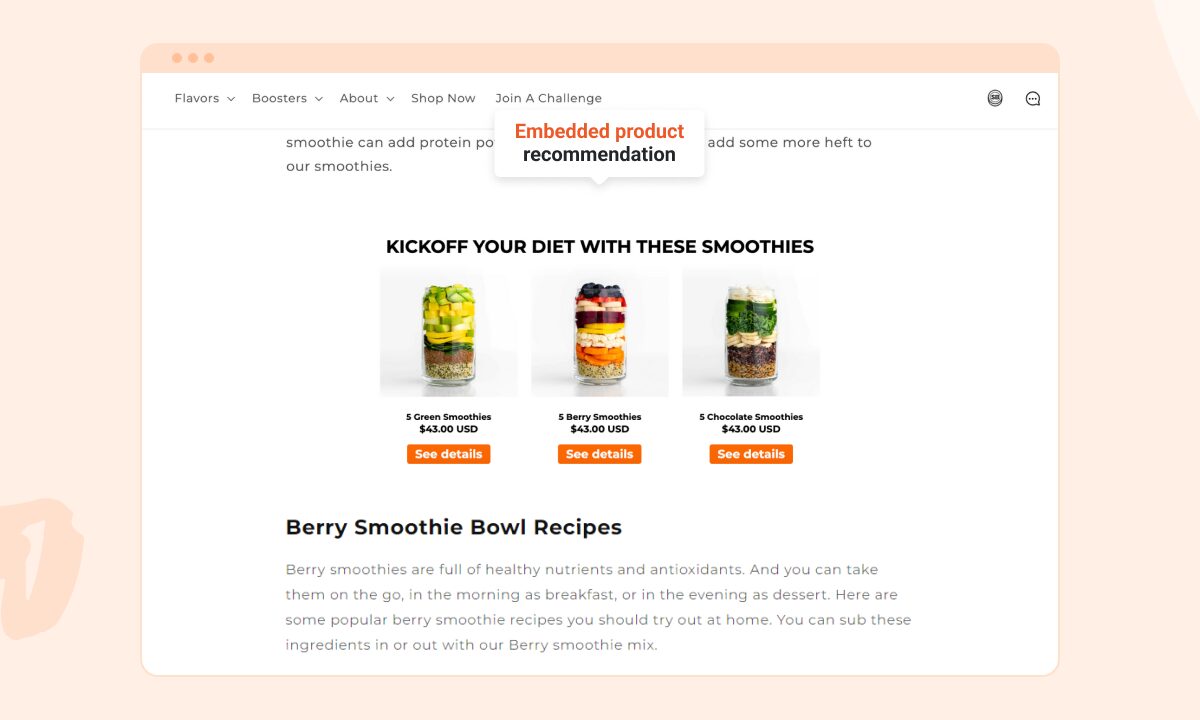
7. Highlight relevant products on exit intent
Visitors that are coming from paid ads (like Facebook ads, Google ads, or Google Shopping Ads) are usually well aware of your prices. This means that your prices are probably not going to be a deal-breaker.
If they browse your products and then try to leave your page, there is an antidote: display an exit-intent popup with relevant product recommendations.
Instead of just pushing for a quick sale or a sign-up, use this popup to show prospective customers how your products improve their lives with personalized headlines.
Check out how Lammle’s did it on their Shopify store below.
They used OptiMonk to show dynamic product recommendations based on the page the visitor was browsing when they tried to exit. This strategy helped them increase revenue by 23.5%!
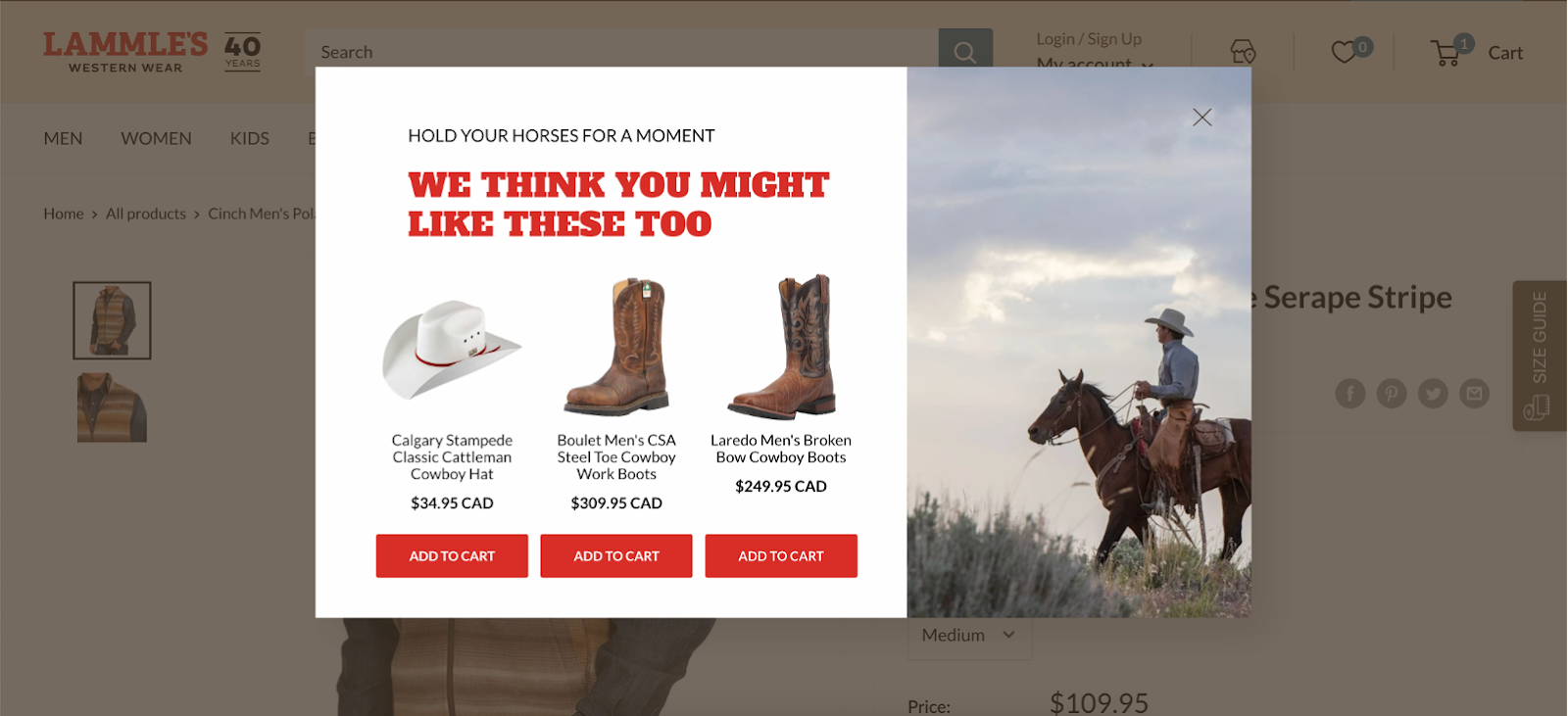
Want to increase sales on Shopify with product recommendations? Try these templates now:
8. Set up cart abandonment popups
The average ecommerce cart abandonment rate is 66.5%. This means that effective marketing strategies should definitely include strategies to recover abandoned carts.
The best way to decrease cart abandonment rates is to use popups that offer a limited-time discount. And to increase the sense of urgency, you can include a countdown timer on your popup.
This will create a sense that the deal is transient, encouraging customers to complete their purchases quickly.
Let’s check out a great cart abandonment popup example from Shopify store The Turmeric Co. This campaign had an amazing 28.76% conversion rate.
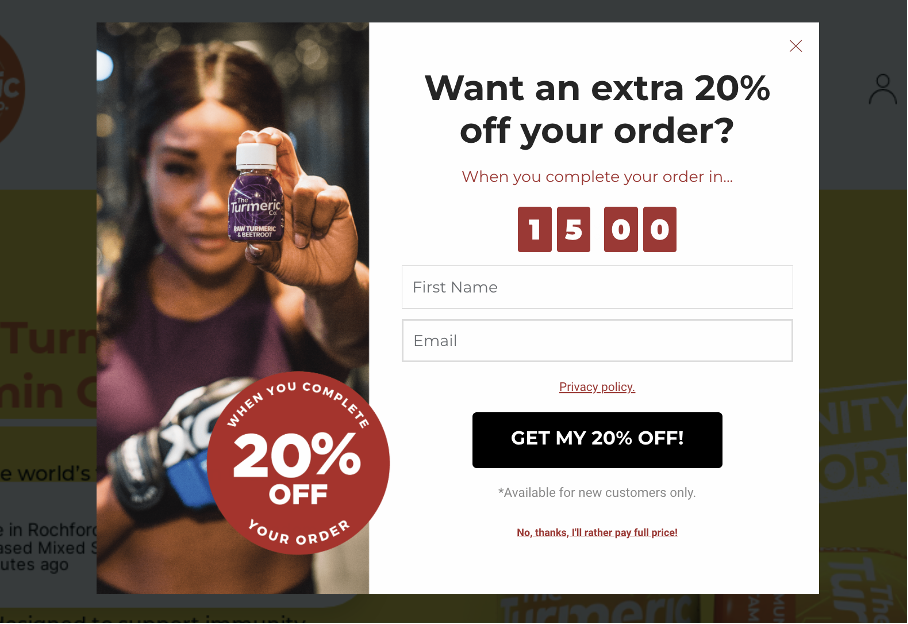
Don’t let those sales slip through your fingers! Get started with these cart abandonment popup templates:
9. Run abandoned cart email marketing campaigns
Even with a sweet discount dangling in front of them, some shoppers might add items to their cart and abandon ship before checkout.
This is where abandoned cart emails become your secret weapon.
These emails are like friendly little nudges reminding those shoppers about the treasures they left behind. Use them to showcase the products again, highlight the benefits they’ll enjoy, and make that “complete purchase” CTA button too tempting to resist.
Check out this email marketing example from Kate Spade as an inspiration for saving abandoned carts:
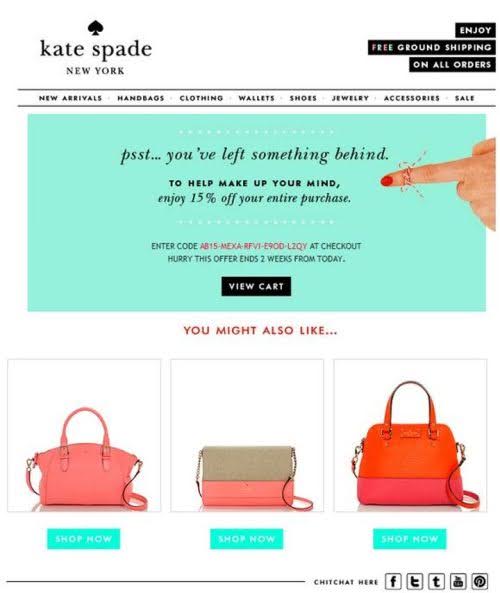
10. Add trust signals to your online store
Winning over new potential customers can be tough. They’re bombarded with choices, and taking a leap of faith with an unfamiliar brand can feel risky.
That’s why you should use trust badges. These visual cues reassure visitors that your Shopify store is legitimate and secure. A trust signal can be a customer review, a money-back guarantee, a secure payment badge, or even an SSL certificate.
Here’s an example from BOOM! By Cindy Joseph, where they offer a 100% money-back guarantee for their customers. This reassures customers and provides them with a feeling of safety.
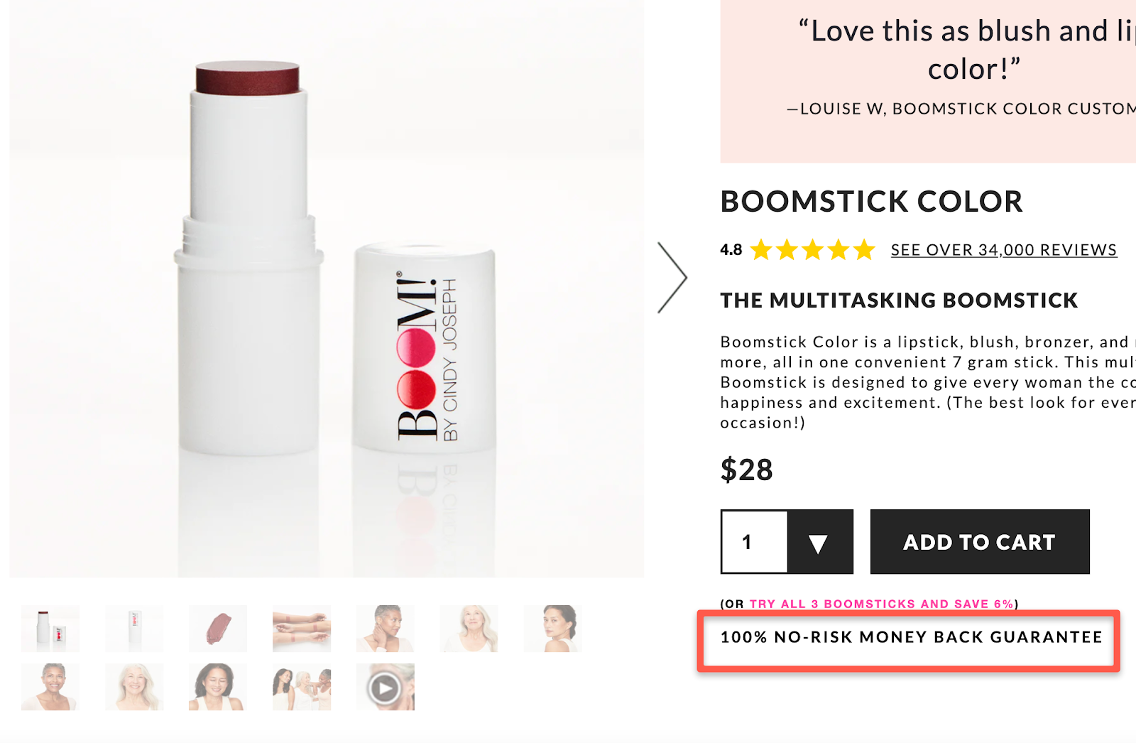
11. Focus on customer retention
Happy customers are loyal customers. Keeping your existing customers engaged is key to keeping your business thriving. After all, they’ve already experienced the quality and service you offer.
So how can you encourage repeat purchases?
Personalized popups highlighting your latest arrivals can be a powerful ally, helping to increase customer retention and boost sales on Shopify.
When a customer sees something relevant to their interests, they’re more likely to be intrigued and click through to explore further.
Take inspiration from Vegetology. Their personalized popup promotes a new product bundle specifically targeted at returning customers with an exclusive discount.
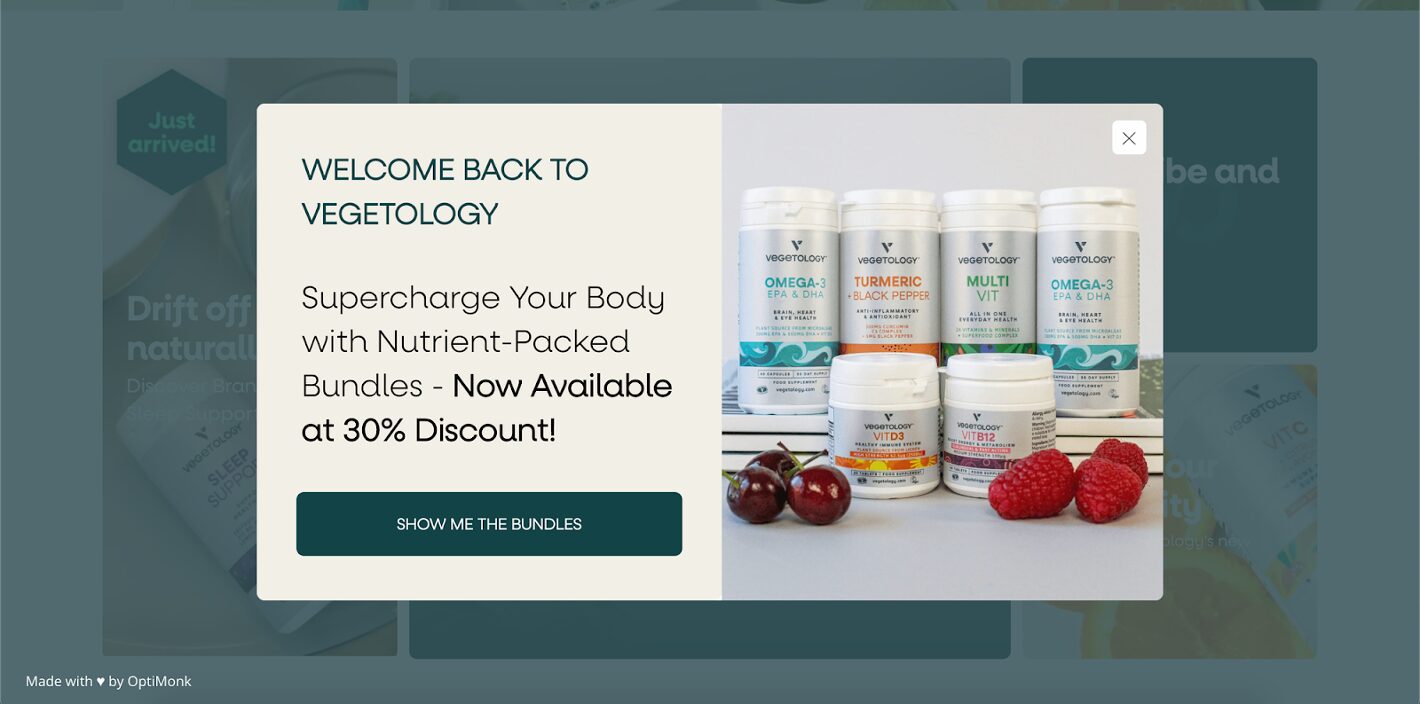
12. Improve your product pages
Turning website visitors into paying customers all boils down to one crucial element: compelling product pages.
Your first step should be benefit-driven headlines. Use your headlines to grab attention—instead of a generic product name, focus on using words that highlight the key benefit your product offers.
People skim online, so keep your product descriptions concise and engaging.
Don’t forget another key element, which is testimonials from satisfied customers. Showcasing positive reviews is one of the best ways to build trust.
And last but not least: a picture is worth a thousand words, especially when it comes to online shopping. Make sure you include high-quality product images that show off your product in detail.
Let’s check Solagarden‘s product page as a perfect example:
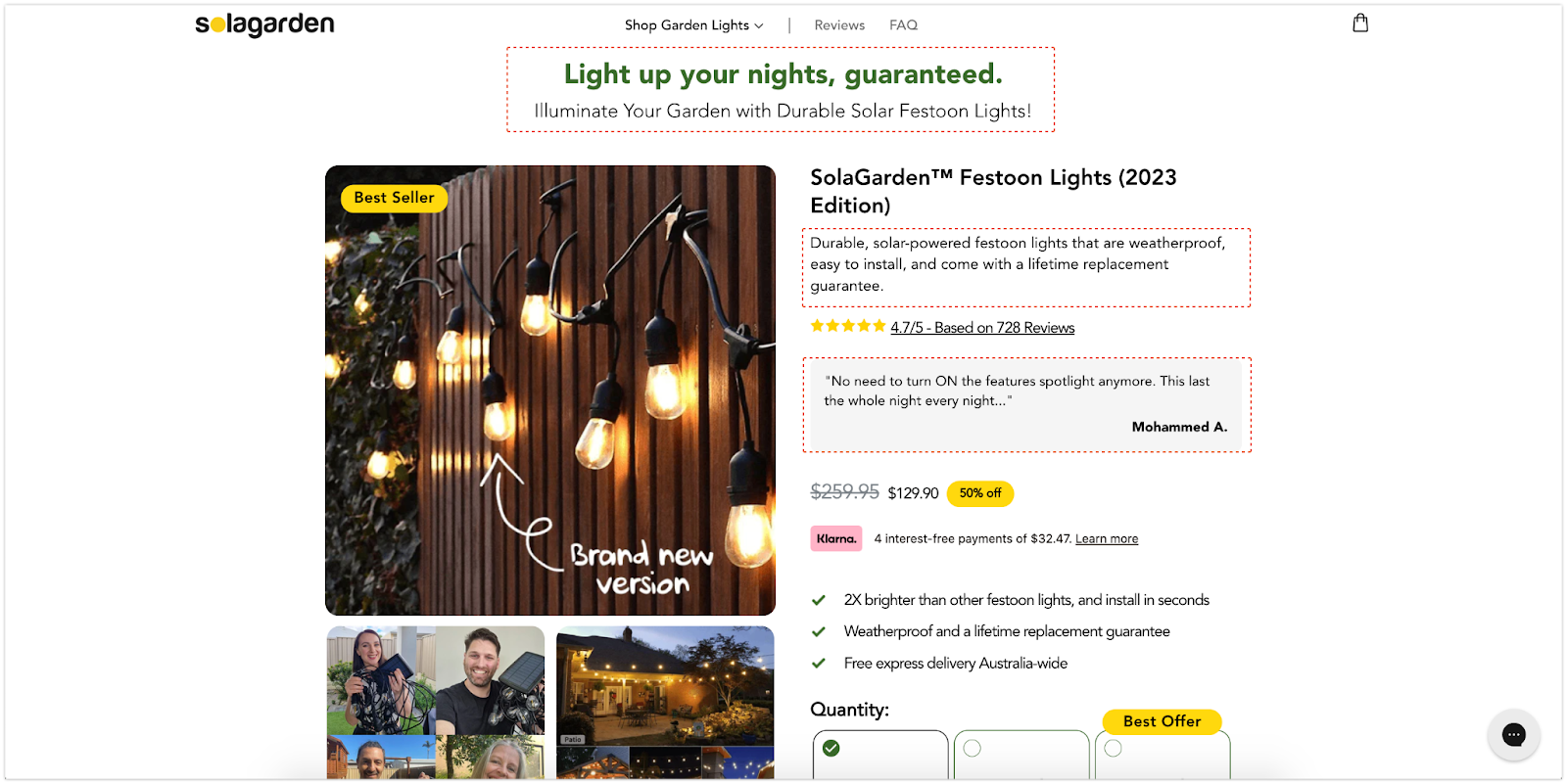
They use a great benefit-driven headline plus a detailed product description, a customer review, and a bullet list of key benefits.
Want to upgrade your product pages on a larger scale? Try OptiMonk’s AI-powered Smart Product Page Optimizer tool.
13. Use gamification
As human beings, we all like to play. So why not add a spark of excitement to your Shopify store?
Look no further than lucky wheel popups. These interactive popups gamify the shopping experience, offering discounts or prizes in exchange for customer engagement.
The thrill of the unknown and the chance to win something for free naturally grabs attention. This keeps visitors on your site longer, giving you more opportunities to showcase your products and increase sales.
Why not get started straight away?
FAQ
How do I sell fast on Shopify?
To sell fast on Shopify, it’s crucial to start with a strong foundation, which means ensuring that your store is visually appealing and easy to navigate, with high-quality images and detailed product descriptions. Use Shopify’s built-in tools to streamline the checkout process and offer multiple payment options to reduce cart abandonment. To increase sales, you should leverage social media platforms, implement email marketing campaigns, and consider running targeted ad campaigns on platforms like Facebook and Google to reach a broader audience quickly. You can also implement a customer loyalty program.
How do I get my Shopify store noticed?
Getting your Shopify store noticed involves a combination of marketing strategies and optimizing your online presence. Start by utilizing SEO best practices to ensure your store appears in search engine results. Engage with your audience on social media channels by sharing engaging content, collaborating with influencers, and running promotional social media campaigns. Lastly, participate in online communities and forums related to your industry to build relationships and promote your store.
How do I optimize sales on Shopify?
If you want to optimize your Shopify store and get more sales, try offering discounts on popups to incentivize purchases and a loyalty program to encourage repeat business. Also, utilize Google Analytics and Shopify’s analytics tools to track your store’s performance and gain insights into customer behavior, which can inform your marketing strategy.
Wrapping up
Armed with these 13 powerful strategies and valuable insights, you’re well on your way to boosting your Shopify sales!
Implement these tactics together to create a seamless, engaging customer journey, guiding your visitors from initial discovery all the way to a satisfying checkout experience.
Take your first step, register your forever-free OptiMonk account, and turn those visitors into loyal customers!
Migration has never been easier
We made switching a no-brainer with our free, white-glove onboarding service so you can get started in the blink of an eye.

What should you do next?
Thanks for reading till the end. Here are 4 ways we can help you grow your business:
Boost conversions with proven use cases
Explore our Use Case Library, filled with actionable personalization examples and step-by-step guides to unlock your website's full potential. Check out Use Case Library
Create a free OptiMonk account
Create a free OptiMonk account and easily get started with popups and conversion rate optimization. Get OptiMonk free
Get advice from a CRO expert
Schedule a personalized discovery call with one of our experts to explore how OptiMonk can help you grow your business. Book a demo
Join our weekly newsletter
Real CRO insights & marketing tips. No fluff. Straight to your inbox. Subscribe now
Barbara Bartucz
- Posted in
- Ecommerce
Partner with us
- © OptiMonk. All rights reserved!
- Terms of Use
- Privacy Policy
- Cookie Policy
Product updates: January Release 2025








